
VRF / VRV Air Conditioning System
The VRV/VRF system represents a qualitative advancement in the world of high-efficiency cooling and is considered one of the latest, most flexible, and most effective air conditioning technologies. This system covers a wide range of applications, such as hotels, towers, schools, government buildings, and homes, with great ease of control and management.
VRV/VRF technology was first developed in Japan by Daikin In 1982, it was then adopted by many international companies under different brand names such as: LG (Multi-V)، Midea، Samsung، Gree، Toshiba، Mitsubishi.
VRF/VRV System Air Conditioning Installation Requirements!
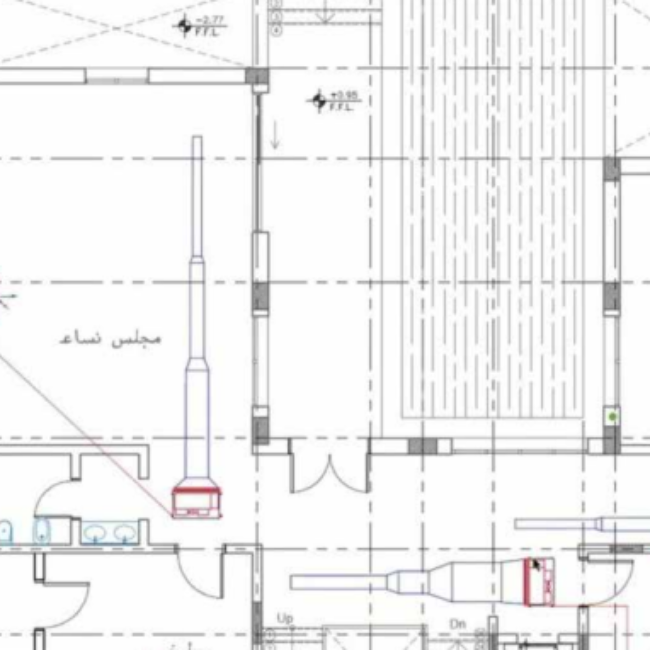
Engineering design
And its conformity with the architectural and construction plans
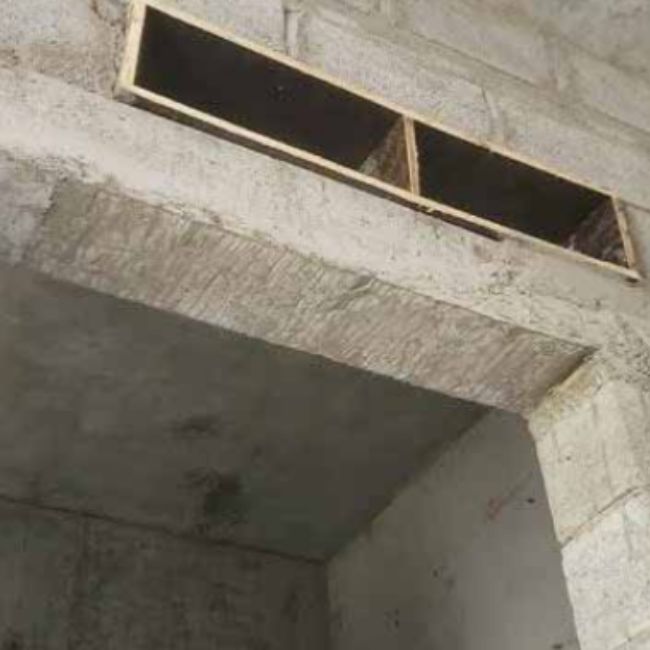
Starting the foundation at the right time
This is to avoid cracking and conflict with concrete bridges.
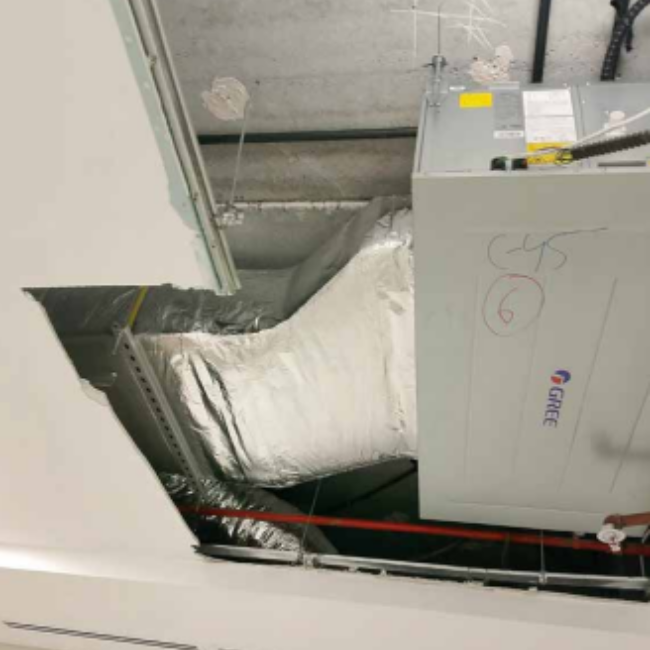
Ceiling height is sufficient for installation
Indoor unit
Components of air conditioning VRF/VRV system

Indoor unit
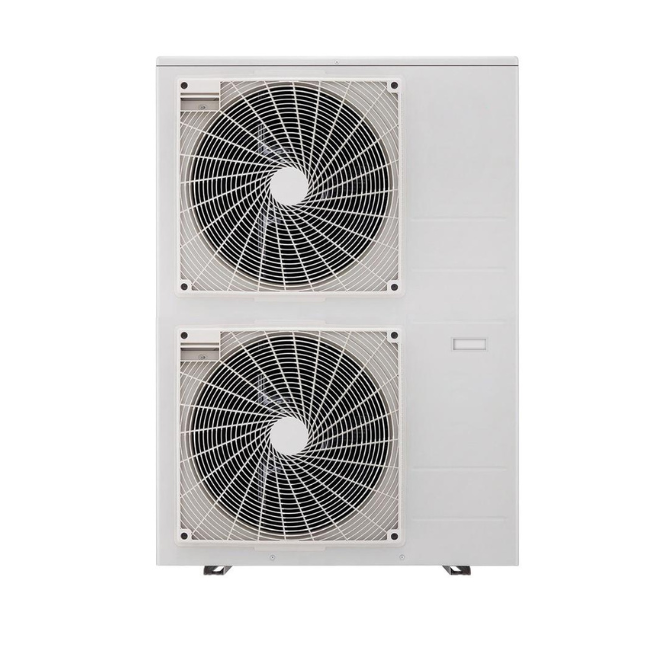
Outdoor unit.
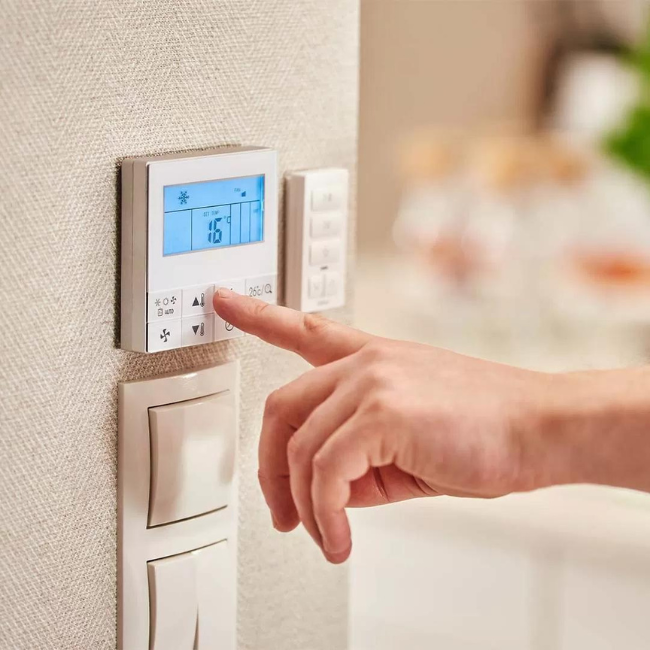
Thermostat
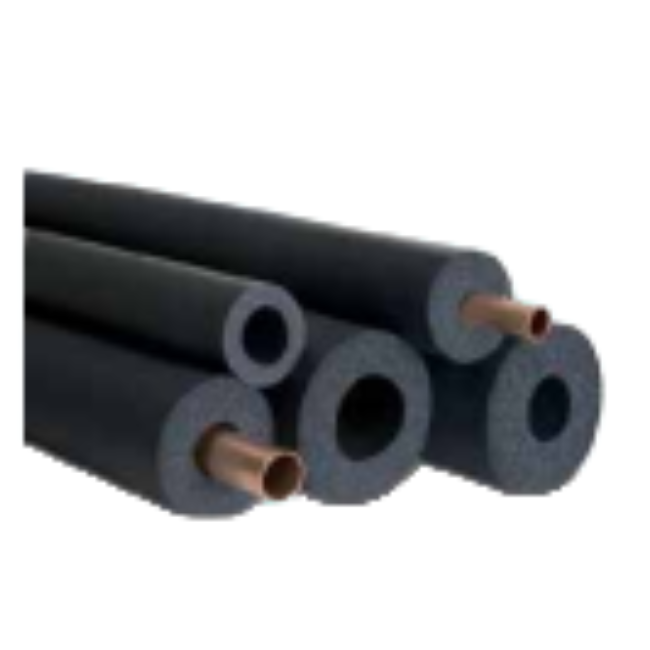
Copper pipes
How a VRF/VRV System Works and Components
-
The system consists of one outdoor unit connected to several indoor units of various shapes, such as: concealed, cassette, wall, etc.
-
The compressor works with technology. Inverter Or Digital Depending on each manufacturer.
-
The system features smart electronic boards that receive cooling load data for each indoor unit and send it to the compressor, contributing to significant energy savings compared to other systems.
-
The length of the copper extension network between the units can reach 1000 meters (100m vertical + 900m horizontal), making it ideal for high-rise buildings and towers without the need to allocate entire floors for services.
-
The ability to connect multiple indoor units to a single outdoor unit helps reduce the number of units on roofs and save space.
Advantages of air conditioning VRF / VRV system!
Energy saving: Lowest electricity consumption compared to any other air conditioning system.
Quiet Operation: Reduced noise and vibration levels from outdoor units.
Reduced breakdowns: Thanks to less reliance on accessories and additional parts.
Smart fault diagnosis: The system identifies faults electronically and can be connected to the Internet to send notifications and alerts before they occur.
Why is VRF/VRV the best option today?
-
Because it represents the ideal modern solution in the world of air conditioning, as it combines:
-
Highest operational efficiency Provides outstanding performance.
-
Less energy consumption Compared to traditional systems.
-
Greater flexibility In design and installation to suit different spaces.
-
Easy maintenance With precise temperature control.
Making it ideal for both residential and commercial applications.
-
Frequently Asked Questions about VRF/VRV System
It is an advanced air conditioning system (Variable Refrigerant Volume/Flow) that is characterized by high energy efficiency and great flexibility in adapting to various types of buildings such as hotels, towers, schools, government buildings, and even homes.
It was first developed in Japan in 1982 by the company DaikinThen it spread globally and was adopted by major companies such as: Mitsubishi، Toshiba، LG، Samsung، Gree، Midea Under different names.
Depends on One outdoor unit Connected to several different indoor units (concealed, cassette, wall).
is used Inverter or digital compressors To reduce energy consumption.
Contains Smart electronic boards To control the cooling load of each room with high precision.
Allows copper extensions up to 1000 meters, making it ideal for towers and large buildings.
Connecting multiple indoor units to a single outdoor unit reduces the number of appliances on surfaces and saves space.
Less energy consumption Compared to any other air conditioning system.
Less malfunctions With ease of discovery electronically.
possibility Internet connection To send bug notifications.
Less noise and vibration With many traditional systems.
Because it combines:
High operational efficiency.
Great flexibility in design and installation.
Reducing operating costs in the long term.
Easier and smarter maintenance.
Which makes it The perfect choice for modern commercial and residential projects.
